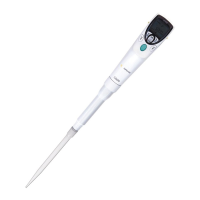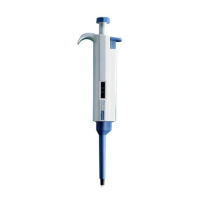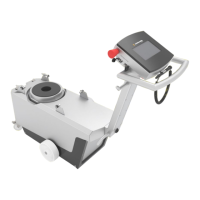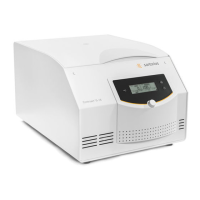11
Operation
Notes on Analytical
Weighing with Weigh Cells
Handling of Samples and Containers
Samples should be acclimatized to the
temperature of the weigh cell.
This is the only way to avoid negative
effects on results, such as measurement
errors and fluctuations caused by air
buoyancy resulting from convection
currents across the surface of the
sample.
These negative effects increase as the
volume and/or surface area of the
sample increases. For this reason, the
size of the container should be appro-
priate for the sample.
Samples and containers should not be
touched by the operator’s hands, as the
hygroscopic effect of fingerprints and
the effect of the hand’s temperature
can influence the measurement results.
Samples must be applied very carefully,
whether manually (using a forceps)
or automatically (by a robot or filling
system).
When designing a draft shield device,
steps must be taken to keep the
increase in temperature within the
weighing chamber to a minimum
(e.g., using a bypass).
Weighing Electrostatically Charged
Samples and Containers
Significant measuring errors can occur
when electrostatically charged objects
are weighed. Materials with extremely
low conductivity, such as glass, plastic
or filters, are particularly susceptible
to static electricity (resulting e.g. from
friction) because the weighing pan can
discharge the static electricity only very
slowly.
The result is a force action between the
charge on the sample and the perma-
nently installed parts of the weigh cell.
This causes the readout to fluctuate
constantly.
Ionization can be applied to make
the air around the sample conductive.
This allows the charge to be compen-
sated through the air, or discharged
through the ground (grounded).
Aside from purely mechanical solutions
(e.g., using a special weighing pan to
shield the sample), bombarding the
sample with ions of opposing polarity
to neutralize the surface charge is one
of the most effective methods for elim-
inating static electricity. Sartorius can
provide ionization devices for installa-
tion in weighing systems.
The area around the weigh cell, like
plastic parts, can also contain charges
that negatively affect the accuracy of
weighing results. Appropriate steps
(grounding) taken in the design of a
draft shield device can counteract such
effects.
A threaded hole (M6) in the equipoten-
tial bonding terminal is provided on
the rear of the weighing cell mounting
plate for grounding equipment (e.g.,
a scoop). It must be ensured that the
frame is grounded.
Weighing Magnetic or Magnetizable
Samples
It is technically impossible to avoid
using magnetizable materials for the
production of weigh cells. This is
primarily because the operating prin-
ciple of high-resolution weigh cells is
based on compensation of the load
through magnetic forces.
When weighing magnetic or magnetiz-
able samples or containers, interaction
between the sample or container and
the above-mentioned parts inside the
weigh cell may have a distorting effect
on the weighing results.
To keep such effects to a minimum,
we recommend increasing the distance
between the sample/container and the
weighing system using a non-magnetic
material. The force is reduced quadrati-
cally with the increase in distance.
Magnetizable or magnetized samples
and the weigh cell itself interact
with magnetic fields and magnetiz-
able or magnetized parts in the area
surrounding the weighing system.
The system can be shielded from
external magnetic fields to some extent
using (soft magnetic) plates.
Effects of Drafts
Depending on the size of the load
receptor and the sample, the effects of
drafts may occur.
To minimize this effect, install a draft
shield for protection.
Calibration/Adjustment
Calibration/adjustment can be
performed as follows:
– Using control commands sent by the
CAS-Suite configuration software from
Sartorius, installed on a computer (see
page 23 for the commands)
or
$ Using the optional YAC01ED
control unit

